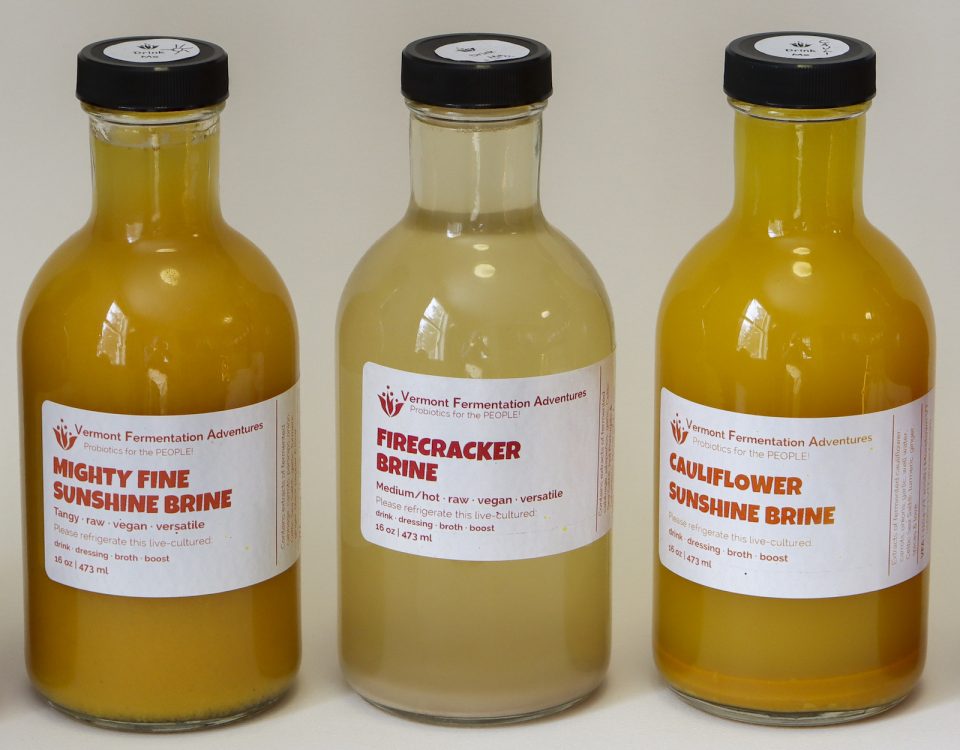My friend Liza has been making yogurt for a long time, and the day that she showed me her method, she also lent me her copy of Wild Fermentation by Sandor Ellix Katz. I have since then become a fermentation freak.
To make yogurt, I buy raw, organic, whole milk from a local farm. This step is not essential. People can make yogurt from whatever milk is available– homogenized, pasteurized, low fat, skim… We can transform any of it into yogurt. I think it is reasonable to guess that if you like drinking the milk as fluid milk, you will like eating the yogurt that you create with it.
Once I get the milk home, I measure it into two glass, wide-mouth, quart jars. I have found that if I measure 8 cups of milk into a pot, I usually end up with a little extra as I think those quart jars have to be totally filled to reach four cups. So I measure, and then I add two tablespoons of organic heavy cream or half and half to the milk in the quart jars. If you are going to add either of these, be sure to get them with no additives. Even organic creams and half and halves can have carageenan in them. This may be totally fine for yogurt, but I like to know my yogurt is milk, cream, cultures and nothing else.
Once everything is measured, I pour the very full quart jars into a stainless steel pot and slowly heat the milk until it reaches 180 degrees Fahrenheit. I got a $20 digital, instant read thermometer at Bed, Bath & Beyond, and it has made a huge difference in this process. Sandor Katz gives great descriptions of how to determine the correct temperatures by sight and feel for people who don’t have thermometers.
While the milk is slowly heating, I preheat my yogurt jars and the yogurt incubator. “Yogurt incubator” is my fancy name for a small plastic cooler. I rinse and then fill the same quart jars that I used for measuring the milk with my hottest tap water. Then I put about 2-3 inches of the hottest tap water in the bottom of my little cooler. I set the jars in the cooler and close and latch the lid. Because I have a narrow temperature window in which the beneficial yogurt cultures grow and suppress harmful bacteria, I don’t like to leave room for the milk to get cool, so I preheat and prepare everything as much in advance as I can. After my jars and incubator are set up, I find a warm, quiet spot where I can leave the incubator while the yogurt is culturing. I don’t want to have to move it in-process because of another cooking or cleaning project. I want it to be undisturbed while it is doing its thing. I would guess that jostling the yogurt while it is culturing could effect its texture, never mind the risk of spilling in the incubator or hot water accidentally getting into the jars.
I also prepare my yogurt culture during this time. Though I occasionally use a dry, commercial yogurt culture, for the most part, I use an existing yogurt that I already like as the culture for my next batch. Just like with the milk selection, if you like the yogurt that you use as a culture, you have a better chance of liking the yogurt you make. For each quart of milk, I take one tablespoon, and this is important– not heaping, just one regular, old, flat tablespoon– of yogurt and put it in a small mug. So, when I make two quarts, I get two tablespoons of yogurt, put them in a mug, and set it aside.
I stir the heating milk occasionally and take its temperature each time I stir it. Since I am trying to manage bacteria, I use a stainless steel spoon for stirring. It may not matter, but I feel like perhaps there are fewer incidental bacteria on a clean stainless spoon than on a clean wooden or plastic spoon. As the milk approaches 180, I prepare a cooling bath by running about three or four inches of cold water into my stopped-up sink and adding many ice cubes or a few ice packs. This set up allows me to quickly cool the milk to 125 degrees Fahrenheit. After the milk reaches 180, you can allow it to naturally cool by transferring it to another bowl or pot or setting it out on your porch in the winter, but I like to rapidly cool it as I usually don’t have time to wait for it to cool down on its own. I’d also forget about it and then have to heat it up again! So, I set the pot with the milk in it in the sink cooling bath and the temperature comes down very quickly. I stir the cooling milk often and take its temperature each time I stir it. I would guess it takes about 5 minutes to cool.
Once the cooling milk reaches 125, I take the pot out of the cold water and set it on the counter. Now it is time for me to hustle because, remember, the milk is going to continue cooling, and I want it happily in the incubator with the cultures before it drops much below 110 degrees Fahrenheit. So, step one: remove the jars from the incubator, close the incubator, and empty hot water from jars into a tea kettle or something handy. Step two: pour a ladle full of the heated milk into the mug with your yogurt cultures and mix well. Step three: pour that mug back into the pot with the heated milk and mix well. Step four: pour the contents of the pot into the preheated quart jars and cap. Step five: place jars into incubator so that they are not touching each other or the sides. Step six: pour hot water (that used to be in the quart jars) into the incubator until it comes up to the bottom of the caps and close the incubator. Step seven: take a deep breath and cover the incubator with a towel or two. I usually put a piece of masking tape on the incubator and mark it with the incubation stop time.
I leave my yogurt to incubate for about eight hours. My kids tend to like milder yogurt with less tang, and I am continually fiddling with the incubation time in order to achieve the flavor and texture we all desire. Adding the extra cream has definitely helped with tang/tartness. For people just starting out, I would recommend trying 8 hours using existing yogurt as the culture, with maybe just one quart, and see what happens. Too tart and stiff? Reduce the time. Too mild and runny? Add time. I adjusted my incubation time by thirty minutes to an hour until I determined what was right for us. Like any fermentation process, nothing is set in stone, so I find being flexible in my thinking about incubation time is important.
Remember too that using different yogurts as cultures will produce different flavors. If you are starting with a commercial yogurt, get a plain one with live cultures and no additives like gelatin, corn starch, pectin or other stabilizers and thickeners. Also yogurt cultures change with each generation, so don’t expect yogurt that you made from Brand X to give birth to the same flavor and texture yogurt that you got from Brand X. If you want the same yogurt every time, use a dry, commercial yogurt starter every time (which gets expensive) or buy your yogurt off the shelf. Making it yourself opens up the variables of time, temperature, attitude and attentiveness, so it is never the same twice. Too tangy? Add some maple syrup, agave, or ripe bananas. Too runny? Use it for smoothies or on cereal. The possibilities are only as limited as our imagination. The benefits of culturing our own yogurt extend beyond economics, the environment, health and convenience.
It is a beautiful act to transform food in your kitchen or basement. I hope you find this process as fulfilling and interesting as I do.



